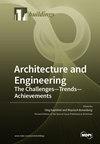基础设施建设项目中的工作场所幸福因素建模:PLS-SEM 方法
IF 3.1
3区 工程技术
Q2 CONSTRUCTION & BUILDING TECHNOLOGY
引用次数: 0
摘要
在建筑工地工作会损害个人的健康和福祉。然而,利益相关者往往只注重改善健康,而忽视了幸福。建立更好的工作场所环境可以提高工作场所的幸福感。因此,本研究旨在调查影响基础设施建设项目中工作场所幸福感的因素。为实现这一目标,本研究的目的是:(1)确定影响基础设施建设项目中工作场所幸福感的关键因素;(2)建立这些因素的基本构造之间的相互关系模型;以及(3)评估基本构造对基础设施建设项目中工作场所幸福感的影响。首先,利用系统文献综述和半结构式访谈的数据,建立了影响工作场所幸福感的因素清单。然后,利用这些因素清单编制了一份调查问卷,并分发给基础设施建设从业人员。共收回 124 份回复,并使用归一化均值分析、探索性因素分析(EFA)和偏最小二乘结构方程模型(PLS-SEM)进行了分析。分析结果显示,关键因素包括工作量、薪资待遇、薪资支付时限、工作时间、项目规划、建筑工人保险、工人福利和项目进度。此外,基本构造还包括物理因素和社会心理因素。最后,研究发现物质因素和社会心理因素对基础设施建设项目中的工作场所幸福感都有重大影响。仅仅关注物理因素可能不足以提高建筑项目中的工作场所福利,因为还有一些非可见因素,如社会心理因素。因此,探索建筑项目中可见和不可见因素之间的相互作用及其对工作场所幸福感的影响至关重要。尽管如此,研究结果仍有一些局限性,包括使用的数据来自单一国家和非亲身实践的建筑从业人员,以及仅使用统计方法得出的基本构造。尽管如此,本研究仍具有独创性,其重点是在基础设施建设项目的背景下,对影响工作场所幸福感的因素之间的关系进行建模。换句话说,本研究有别于以往的研究,它专门对影响基础设施建设项目中员工幸福感的因素进行建模。本文章由计算机程序翻译,如有差异,请以英文原文为准。
Modeling Workplace Well-Being Factors in Infrastructure Construction Projects: PLS-SEM Approach
Working at construction sites can harm individuals’ health and well-being. However, stakeholders often focus on improving health while discounting well-being. Establishing a better workplace environment can improve workplace well-being. Therefore, this study aims to investigate the factors influencing workplace well-being in infrastructure construction projects. To achieve this aim, the study objectives are to (1) identify the critical factors influencing workplace well-being in infrastructure construction projects; (2) develop an interrelationship model between underlying constructs of the factors; and (3) assess the influence of the underlying constructs on workplace well-being in infrastructure construction projects. First, a list of factors influencing workplace well-being was established using data from a systematic literature review and semi-structured interviews. Then, a survey was developed using the list of factors and distributed to infrastructure construction practitioners. In total, 124 responses were retrieved and analyzed using normalized mean analysis, exploratory factor analysis (EFA) and partial least square structural equation modeling (PLS-SEM). The analyses reveal that the critical factors include workload, salary package, the timeline of salary payment, working hours, planning of the project, insurance for construction workers, workers’ welfare and project progress. Furthermore, the underlying constructs are physical factors and psychosocial factors. Finally, both physical and psychosocial factors are found to significantly influence workplace well-being in infrastructure construction projects. Focusing solely on physical factors may not sufficiently enhance workplace well-being in construction projects, as there are also non-visible factors, such as psychosocial factors. Thus, exploring the interplay between visible and non-visible factors and their influence on workplace well-being in construction projects is crucial. Nevertheless, the findings have several limitations, including using data from a single country and non-hands-on construction practitioners, as well as the underlying constructs being derived solely using statistical methods. Still, the study is original in its focus on modeling the relationship between the factors influencing workplace well-being within the context of infrastructure construction projects. In other words, this study differs from prior research by specifically modeling the factors that influence well-being in infrastructure construction projects.
求助全文
通过发布文献求助,成功后即可免费获取论文全文。
去求助
来源期刊

Buildings
Multiple-
CiteScore
3.40
自引率
26.30%
发文量
1883
审稿时长
11 weeks
期刊介绍:
BUILDINGS content is primarily staff-written and submitted information is evaluated by the editors for its value to the audience. Such information may be used in articles with appropriate attribution to the source. The editorial staff considers information on the following topics: -Issues directed at building owners and facility managers in North America -Issues relevant to existing buildings, including retrofits, maintenance and modernization -Solution-based content, such as tips and tricks -New construction but only with an eye to issues involving maintenance and operation We generally do not review the following topics because these are not relevant to our readers: -Information on the residential market with the exception of multifamily buildings -International news unrelated to the North American market -Real estate market updates or construction updates
 求助内容:
求助内容: 应助结果提醒方式:
应助结果提醒方式:


